Chrysler 2012 Annual Report Download - page 87
Download and view the complete annual report
Please find page 87 of the 2012 Chrysler annual report below. You can navigate through the pages in the report by either clicking on the pages listed below, or by using the keyword search tool below to find specific information within the annual report.-
 1
1 -
 2
2 -
 3
3 -
 4
4 -
 5
5 -
 6
6 -
 7
7 -
 8
8 -
 9
9 -
 10
10 -
 11
11 -
 12
12 -
 13
13 -
 14
14 -
 15
15 -
 16
16 -
 17
17 -
 18
18 -
 19
19 -
 20
20 -
 21
21 -
 22
22 -
 23
23 -
 24
24 -
 25
25 -
 26
26 -
 27
27 -
 28
28 -
 29
29 -
 30
30 -
 31
31 -
 32
32 -
 33
33 -
 34
34 -
 35
35 -
 36
36 -
 37
37 -
 38
38 -
 39
39 -
 40
40 -
 41
41 -
 42
42 -
 43
43 -
 44
44 -
 45
45 -
 46
46 -
 47
47 -
 48
48 -
 49
49 -
 50
50 -
 51
51 -
 52
52 -
 53
53 -
 54
54 -
 55
55 -
 56
56 -
 57
57 -
 58
58 -
 59
59 -
 60
60 -
 61
61 -
 62
62 -
 63
63 -
 64
64 -
 65
65 -
 66
66 -
 67
67 -
 68
68 -
 69
69 -
 70
70 -
 71
71 -
 72
72 -
 73
73 -
 74
74 -
 75
75 -
 76
76 -
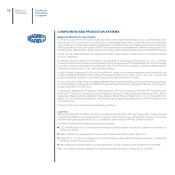 77
77 -
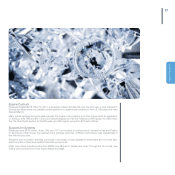 78
78 -
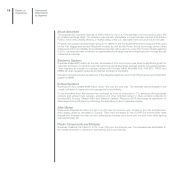 79
79 -
 80
80 -
 81
81 -
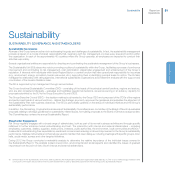 82
82 -
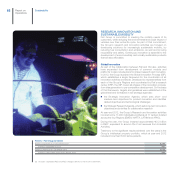 83
83 -
 84
84 -
 85
85 -
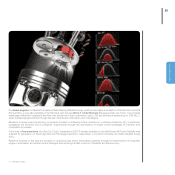 86
86 -
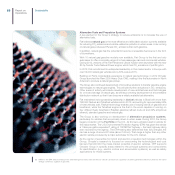 87
87 -
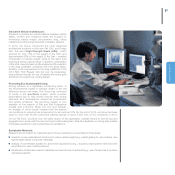 88
88 -
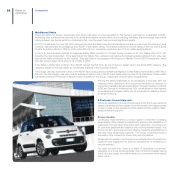 89
89 -
 90
90 -
 91
91 -
 92
92 -
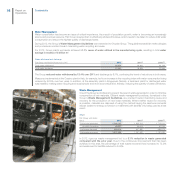 93
93 -
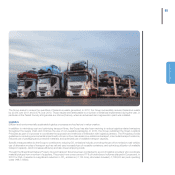 94
94 -
 95
95 -
 96
96 -
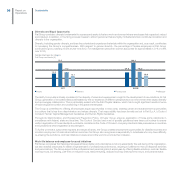 97
97 -
 98
98 -
 99
99 -
 100
100 -
 101
101 -
 102
102 -
 103
103 -
 104
104 -
 105
105 -
 106
106 -
 107
107 -
 108
108 -
 109
109 -
 110
110 -
 111
111 -
 112
112 -
 113
113 -
 114
114 -
 115
115 -
 116
116 -
 117
117 -
 118
118 -
 119
119 -
 120
120 -
 121
121 -
 122
122 -
 123
123 -
 124
124 -
 125
125 -
 126
126 -
 127
127 -
 128
128 -
 129
129 -
 130
130 -
 131
131 -
 132
132 -
 133
133 -
 134
134 -
 135
135 -
 136
136 -
 137
137 -
 138
138 -
 139
139 -
 140
140 -
 141
141 -
 142
142 -
 143
143 -
 144
144 -
 145
145 -
 146
146 -
 147
147 -
 148
148 -
 149
149 -
 150
150 -
 151
151 -
 152
152 -
 153
153 -
 154
154 -
 155
155 -
 156
156 -
 157
157 -
 158
158 -
 159
159 -
 160
160 -
 161
161 -
 162
162 -
 163
163 -
 164
164 -
 165
165 -
 166
166 -
 167
167 -
 168
168 -
 169
169 -
 170
170 -
 171
171 -
 172
172 -
 173
173 -
 174
174 -
 175
175 -
 176
176 -
 177
177 -
 178
178 -
 179
179 -
 180
180 -
 181
181 -
 182
182 -
 183
183 -
 184
184 -
 185
185 -
 186
186 -
 187
187 -
 188
188 -
 189
189 -
 190
190 -
 191
191 -
 192
192 -
 193
193 -
 194
194 -
 195
195 -
 196
196 -
 197
197 -
 198
198 -
 199
199 -
 200
200 -
 201
201 -
 202
202 -
 203
203 -
 204
204 -
 205
205 -
 206
206 -
 207
207 -
 208
208 -
 209
209 -
 210
210 -
 211
211 -
 212
212 -
 213
213 -
 214
214 -
 215
215 -
 216
216 -
 217
217 -
 218
218 -
 219
219 -
 220
220 -
 221
221 -
 222
222 -
 223
223 -
 224
224 -
 225
225 -
 226
226 -
 227
227 -
 228
228 -
 229
229 -
 230
230 -
 231
231 -
 232
232 -
 233
233 -
 234
234 -
 235
235 -
 236
236 -
 237
237 -
 238
238 -
 239
239 -
 240
240 -
 241
241 -
 242
242 -
 243
243 -
 244
244 -
 245
245 -
 246
246 -
 247
247 -
 248
248 -
 249
249 -
 250
250 -
 251
251 -
 252
252 -
 253
253 -
 254
254 -
 255
255 -
 256
256 -
 257
257 -
 258
258 -
 259
259 -
 260
260 -
 261
261 -
 262
262 -
 263
263 -
 264
264 -
 265
265 -
 266
266 -
 267
267 -
 268
268 -
 269
269 -
 270
270 -
 271
271 -
 272
272 -
 273
273 -
 274
274 -
 275
275 -
 276
276 -
 277
277 -
 278
278 -
 279
279 -
 280
280 -
 281
281 -
 282
282 -
 283
283 -
 284
284 -
 285
285 -
 286
286 -
 287
287 -
 288
288 -
 289
289 -
 290
290 -
 291
291 -
 292
292 -
 293
293 -
 294
294 -
 295
295 -
 296
296 -
 297
297 -
 298
298 -
 299
299 -
 300
300 -
 301
301 -
 302
302 -
 303
303 -
 304
304 -
 305
305 -
 306
306 -
 307
307 -
 308
308 -
 309
309 -
 310
310 -
 311
311 -
 312
312 -
 313
313 -
 314
314 -
 315
315 -
 316
316 -
 317
317 -
 318
318 -
 319
319 -
 320
320 -
 321
321 -
 322
322 -
 323
323 -
 324
324 -
 325
325 -
 326
326 -
 327
327 -
 328
328 -
 329
329 -
 330
330 -
 331
331 -
 332
332 -
 333
333 -
 334
334 -
 335
335 -
 336
336 -
 337
337 -
 338
338 -
 339
339 -
 340
340 -
 341
341 -
 342
342 -
 343
343 -
 344
344 -
 345
345 -
 346
346
 |
 |

86
Alternative Fuels and Propulsion Systems
A key element in the Group’s strategy to reduce emissions is to increase the use of
alternative fuels.
Fiat believes natural gas is the most effective and affordable solution currently available
for reducing CO2 emissions and vehicle-related air pollution in urban areas. A car running
on natural gas produces 23% less CO2 emissions than with gasoline.
In addition, natural gas has the potential to become a renewable fuel source in the form
of biomethane.
With 10 natural gas/gasoline models now available, Fiat Group is the first and only
automaker to offer a complete range of bi-fuel passenger cars and commercial vehicles.
During 2012, versions of the Fiat Panda and Lancia Ypsilon were launched with the new
80 hp TwinAir Turbo Natural Power engine, which has CO2 emissions of just 86 g/km.
In 2012, Fiat reconfirmed its undisputed leadership in this market sector in Europe with
over 54,000 natural gas vehicles sold (+30% versus 2011).
Building on Fiat’s considerable experience in natural gas technology, in 2012 Chrysler
Group launched the Ram 2500 Heavy Duty CNG, making it the first automaker in North
America to produce a natural gas pickup.
The Group also continued development of innovative solutions to transfer gasoline engine
technologies to natural gas engines. This will yield further reductions in CO2 emissions.
Other areas of activity will include development of new architectures and technologies
for on-board storage of natural gas, as well as promoting development of a biomethane
distribution network so that it can become a widely available fuel alternative.
Fiat maintained its long-standing leadership in biofuel vehicles in Brazil with more than
798,000 Flexfuel and TetraFuel vehicles sold in 2012, accounting for approximately 96%
of total vehicles sold. Flexfuel technology enables use of varying blends of gasoline and
bioethanol, while the TetraFuel engine is the first in the world capable of running on
four different fuels: bioethanol, Brazilian gasoline (refined crude oil and 22% anhydrous
ethanol), standard gasoline and natural gas.
The Group is also working on development of alternative propulsion systems,
particularly for vehicles that are primarily driven in urban areas. During 2012, the Group
began production of the Fiat 500e in the U.S., its first zero-emission electric vehicle for
the mass market. The U.S. Environmental Protection Agency (EPA) has given the vehicle
a “miles-per-gallon-equivalent” rating of 108 MPGe8 highway – the best highway rating
ever recorded by the agency. The EPA testing also determined that, fully charged, the
car has a range of around 87 miles (about 140 km). That range is higher than any other
electric vehicle produced by a major automaker for the U.S. market.
As the center of expertise for hybrid and electric propulsion technologies within the
Group, Chrysler’s research is focused on overcoming the technological and cost
barriers that still limit the mass-market potential of electric vehicles. CRF supports
Chrysler Group in specific areas related to the principal systems and components
for electrification (e.g., electric motors and accumulator systems), as well as safety
applications for those systems.
(8) MPGe is the EPA-devised measure for determining how many miles an electric vehicle can travel on a quantity of battery-generated electricity that has the same
energy content as a gallon of gasoline.
Sustainability
Report on
Operations
